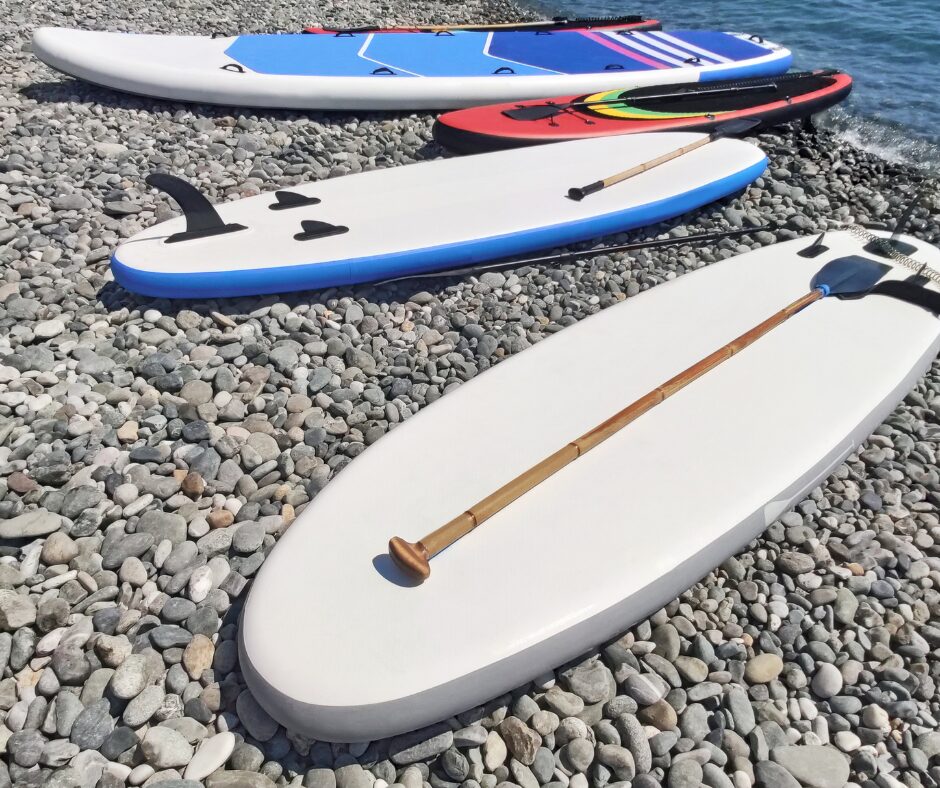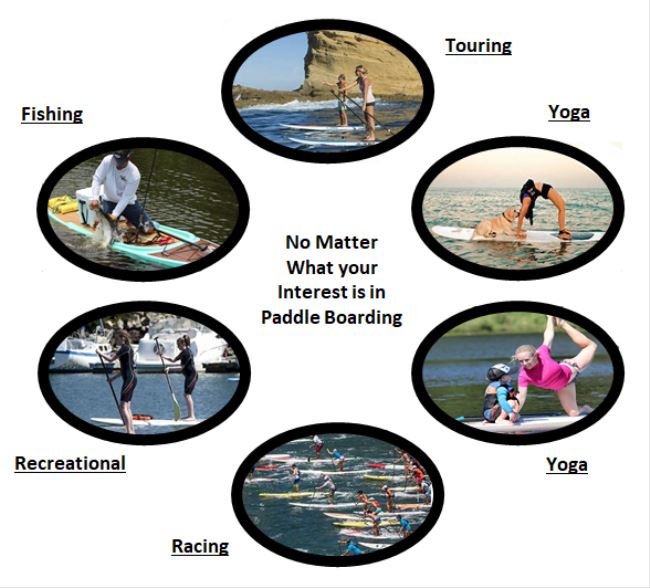When it comes to selecting the perfect stand-up paddle board (SUP), the choice often narrows down to two types: fiberglass and inflatable. Each type has its own set of advantages, and the right one for you depends on your specific needs, preferences, and intended use. In this post, we’ll explore the differences between fiberglass (also called rigid or hard boards) and inflatable paddle boards, and provide tips on how to properly store your board using the Docksider Paddle Board Dock Lift and Storage Rack.
Fiberglass Paddle Boards
Pros:
- Performance: Fiberglass paddle boards are known for their superior performance in terms of speed and maneuverability. They offer a smooth, stable ride, making them ideal for more experienced paddlers and those looking to cover long distances.
- Time Saver: Since you don’t need to add air to a fiberglass SUP, you are good to go when you get to your destination.
- Aesthetics: Fiberglass boards often have a sleek, polished appearance and can be customized with different designs and colors.
Cons:
- Weight: Fiberglass boards are typically heavier than their inflatable counterparts, making them harder to transport and carry.
- Durability: While they are a more solid board, they are easier to dent or scrape than inflatable paddle boards.
- Storage Space: They require more storage space due to their rigid structure, which can be a drawback if you have limited storage options or want to travel with your SUP.
- Cost: Generally, fiberglass paddle boards are more expensive than inflatable ones.
Inflatable Paddle Boards
Pros:
- Portability: Inflatable paddle boards are lighter in weight and can be easily deflated and packed into a compact size, making them convenient for travel and storage.
- Ease of Storage: When deflated, these boards take up minimal space, allowing you to store them in small areas such as closets or car trunks.
- Durability: Modern inflatable boards are made with high-quality materials and can be surprisingly durable, often withstanding bumps and scrapes that might damage a fiberglass board.
- Cost: Inflatable boards are generally more affordable, making them a great option for beginners or those on a budget.
Cons:
- Performance: While inflatable boards have come a long way in terms of performance, they still don’t quite match the speed and responsiveness of fiberglass boards.
- Inflation/Deflation Time: You’ll need to spend time inflating and deflating the board before and after use, which can be an inconvenience.
- Maintenance: Inflatable boards require careful handling to avoid punctures and need to be thoroughly dried before storage to prevent mold and mildew.
Storing Your SUP with the Docksider Paddle Board Lift & Storage Rack
Regardless of the type of paddle board you choose, proper storage is essential to maintain its condition and extend its lifespan. If you have your own dock, stop lugging your SUP to and from the water. The Docksider Paddle Board Rack is a versatile and convenient storage solution for paddle boards, making accessing your board at your dock easy. Simply choose from a water entry or dock entry rack and install the lift and storage solution to your dock. The next time you are ready to get out on the water, simply lower the lift assist lever and slide your SUP out. When you’re done using it, just load and lift it to store your board.
If you live somewhere with all four seasons and need to store your SUP during the colder months, the Wall Mount Rack Kit transforms your Docksider Lift & Storage Rack for the wintertime. Easily store your SUP inside a garage, shed, or cottage, away from the harsh winter weather, when you aren’t using it.
By choosing the right type of paddle board and storing it properly with the Docksider Paddle Board Lift & Storage Rack, you can ensure that your board remains in excellent condition for many seasons of paddling. Whether you opt for the performance of a fiberglass board or the convenience and portability of an inflatable one, taking the time to care for your board will enhance your overall paddle-boarding experience.





